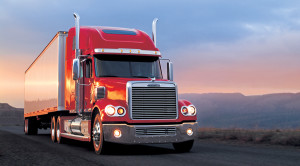 This new year, like the start of every past year, will bring about new challenges in the trucking industry. Business and personal demands will change, and we will have to adapt to these changes. In 2016, we will see the insurance market tighten, premiums will increase moderately, and underwriting will play a major part in the development of insurance premium. Last year we saw rates jump up 5% to 20%, with a renewed emphasis on underwriting. Keep your MVR clean this year – it will pay you dividends in the future, for sure.
This new year, like the start of every past year, will bring about new challenges in the trucking industry. Business and personal demands will change, and we will have to adapt to these changes. In 2016, we will see the insurance market tighten, premiums will increase moderately, and underwriting will play a major part in the development of insurance premium. Last year we saw rates jump up 5% to 20%, with a renewed emphasis on underwriting. Keep your MVR clean this year – it will pay you dividends in the future, for sure.
In light of everyone’s New Year’s resolutions, I decided to never make any more resolutions that I am willing to share. Breaking resolutions only feeds mediocrity, and you are just setting yourself up for disappointment. I did take the time to review and commit to paper three broad milestones that I would like to achieve in the coming years. With that said, I think that every small business person should review his/her business plan, and if you do not have or have never done a business plan, you should do so now. With this said, happy New Year! Now, let’s discuss some trending topics regarding insurance.
General Liability. I am seeing more requests for this type of coverage from both brokers and shippers alike. The coverage does not cover the operation of the truck – you have Liability, Physical Damage and Cargo for that. General Liability provides coverage for those business activities that are not covered by the truck’s insurance package.
If you operate machinery that is not licensed for the road, such as fork lifts, pallet jacks and/or loading and unloading equipment, coverage would exist for any property damage or bodily injury incurred through the use of that equipment. Many sand and gravel operations require you to carry the coverage. If you have employees, it would not cover the employee, but it would cover you for the employees’ actions. Many shippers require you to carry General Liability if you or your employees are on the dock. If you have a yard, coverage would exist, if for any reason a third party brought a legal action against you. Slip and fall is a term that we use. If you rent space to park your truck, many property owners may require it.
The coverage is relatively cheap and, in some cases, can be added to your truck insurance package. If you’re an owner operator and your truck liability policy will not provide coverage, a stand-alone policy runs around $500 per year. If you are a small fleet owner, premiums are based on the number of vehicles you operate. These premiums range around $350 per vehicle. Premiums for larger companies are based on revenue.
Excess Liability. Most of you probably carry one million dollars in liability limits. Some of you still might be getting away with seven hundred and fifty thousand dollars, but it is rare that I ever write that limit any longer. If you haul for anyone these days, they will require one million dollars of coverage, but I am now seeing more requests for two (or in some instances limits to five) million dollars! At that point, since it will cost you a lot more, you will be forced to ask yourself, “Is it worth it?” Then, based on your answer, make a decision.
The majority of the primary truck liability policies that I see and write will only provide limits up to one million dollars. I have only one company that will even consider two million dollars. The purchase of an excess liability policy increases the liability limit to satisfy your broker or shipper’s requirements. The premium for an owner operator purchasing an excess liability policy in the amount of one million dollars is around $1,500 to $2,000. The excess liability premium for a multi-truck risk would be much cheaper per power unit. At that point, the premiums can also be negotiated.
Motor Truck Cargo. Of all the claims that you are faced with, cargo creates the biggest area of conflict. The policy, or that section of your policy, that covers your cargo liability, should be read and/or even discussed with your insurance agent or broker thoroughly. As with all of the policies you have, the insuring agreement is followed by exclusions. But, your cargo coverage goes several steps further – within the policy there are certain conditions and requirements that have to be met for the successful conclusion of a cargo claim. Many policies have what is called “co-insured” clauses in them (you should learn the ramifications of these). Each and every exclusion, condition and requirement should be understood BEFORE a loss occurs. It is too late to read and understand what will be paid and what will not be paid in the event of a claim.
For the most part, cargo coverage follows the tractor, and the payment of a loss has to occur while the trailer is connected to the tractor. Coverage may not exist if the trailer is not connected to the tractor or is left unattended, so please do not do this. Resolutions aside, here’s wishing you and yours a safe and prosperous 2016. If you have any comments or questions, I can be reached through California Plus Insurance Service in Modesto, California at (800) 699-7101.
